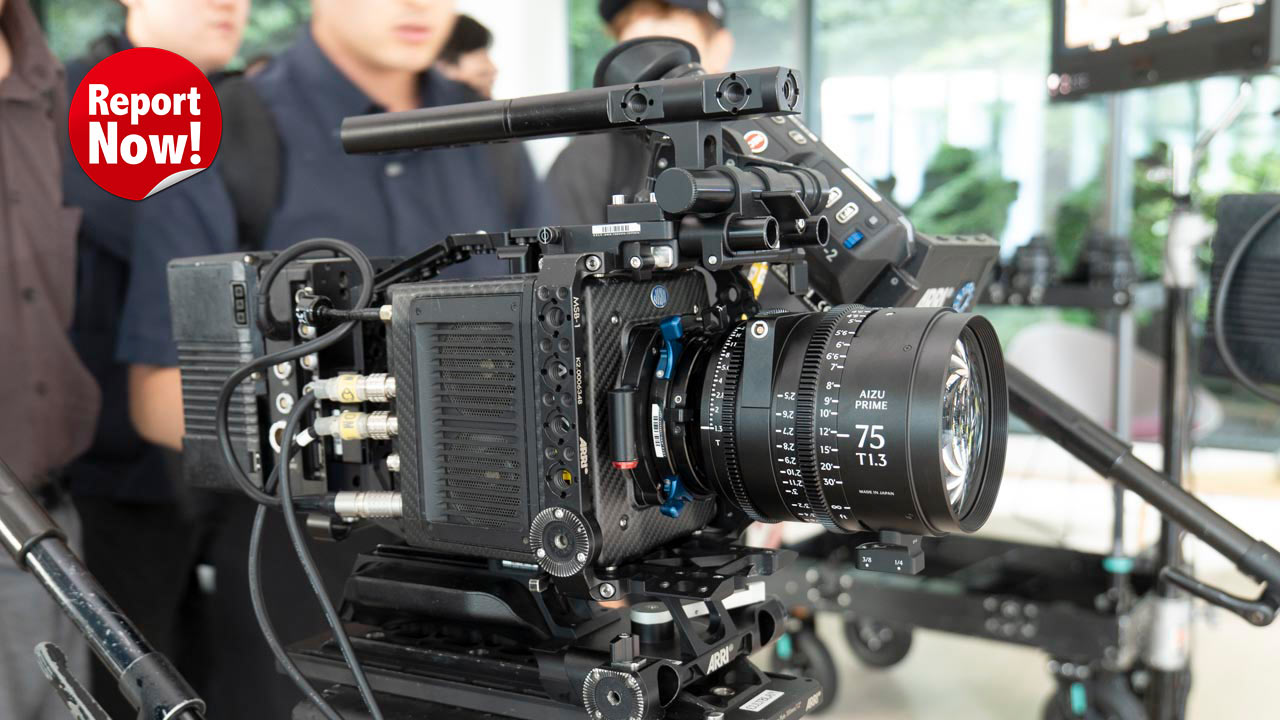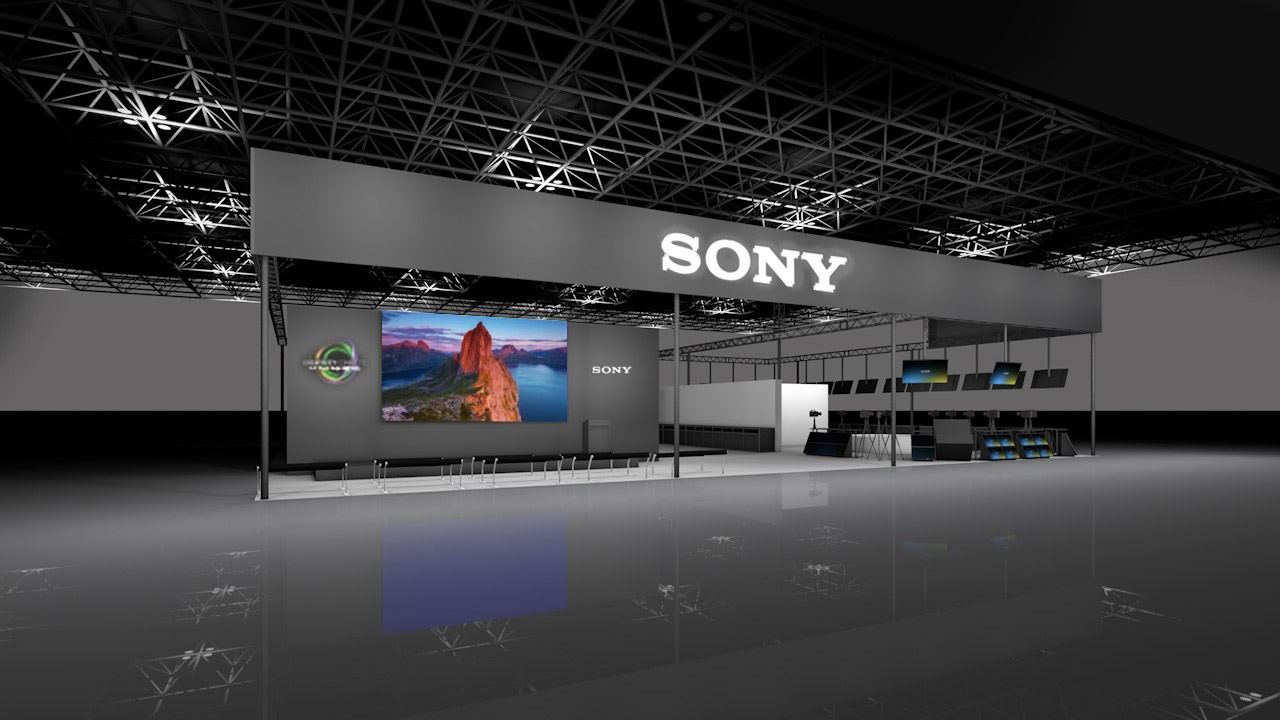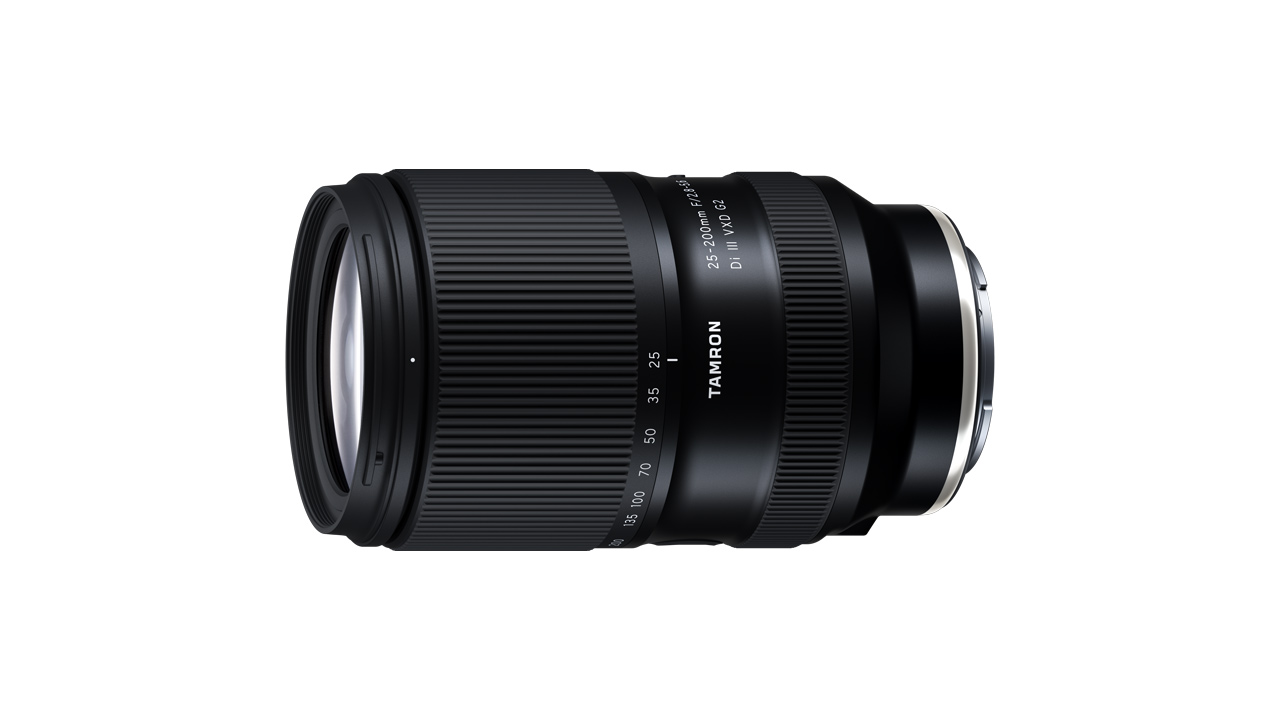Cine Gear 2025 / Vol.02
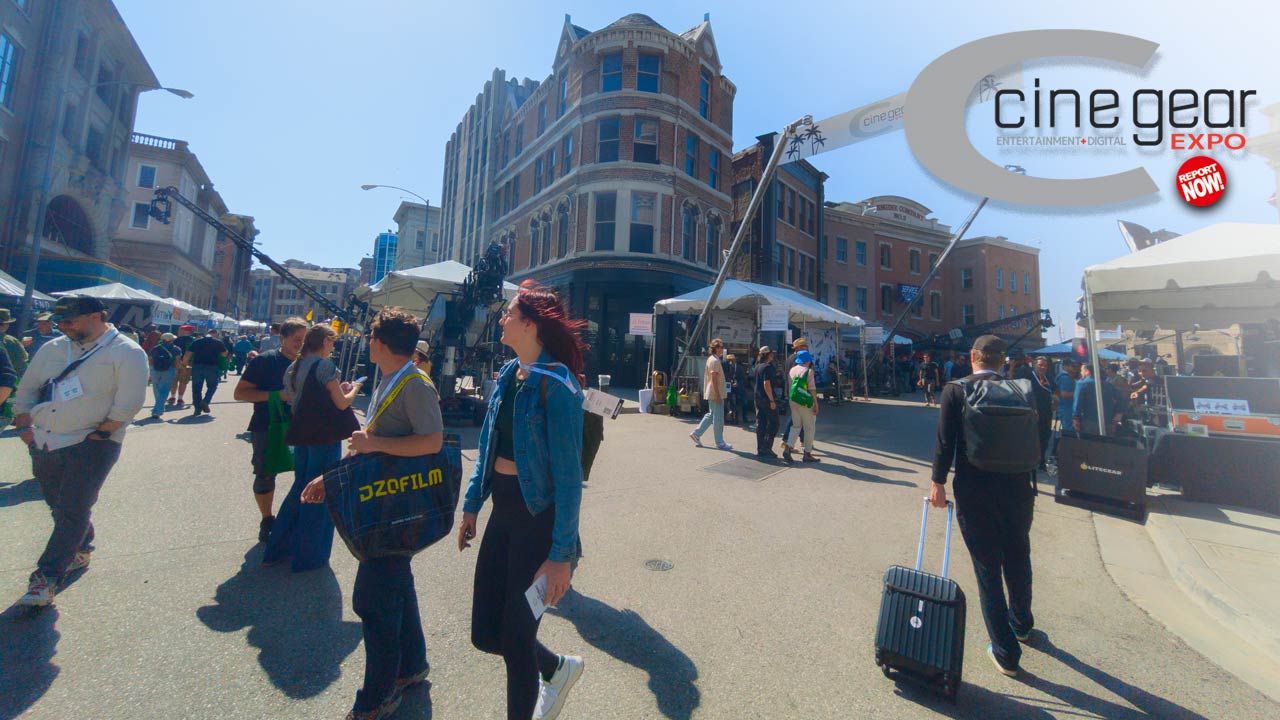
It was heavy and cold, and the moment I picked it up, I felt a sharp pain in my lower back and couldn’t move a single step. “It’s not something I can operate at all.” That was my first experience with a Steadicam. This is a memory from a certain broadcasting equipment exhibition more than 20 years ago.
Ten years later, luckily, I had opportunities to meet some great Steadicam lead instructors and the technology and products of Steadicam, which continue to evolve every year, nowadays I have been able to open the door to Steadicam operators that I was unable to do more than 10 years ago.
Another 10 years have passed since then, and it is now 2025. Now that I have gained experience using Steadicam in various locations, I decided to head on Los Angeles for the first time when I heard that a long-awaited new Steadicam would be exhibited at Cine Gear LA Expo. In this article, I will introduce the exhibition held at Universal Studios for two days from June 7th to 8th from the perspective of a Steadicam operator.

Tiffen releases new Volt system!

The venue of Cine Gear LA Expo was Universal Studios – Hollywood New York Back Lot about a 15-minute walk from Gate 4 where the reception is located. I headed to the booth of Tiffen, the manufacturer of Steadicam brand stabilizers, located near the center of the venue. The focus was on the VOLT 3, a 3-axis controlled VOLT system whose prototype was released at last year’s Cine Gear LA.

Last year, Tiffen announced the Steadicam AXIS, which was equipped with a 3-axis controlled Volt system on an updated Steadicam Aero-30 rig. While AXIS comes with a built-in 3-axis Volt system, the newly announced VOLT3 system has a 3-axis control pot box attached to the side of the Steadicam M2 top stage, and a newly designed Volt gimbal with added motor control in the pan direction is mounted on the post.
According to Tyson Galland (video below), a Steadicam operator who was also involved in the development team of the VOLT3 system, the electronic control in the pan direction on a large rig like the M2 makes it possible to operate Don-Juan (where the camera faces backwards in the direction of the operator’s movement), which was previously difficult to operate, as well as long-high mode and long-low mode with a 3-section post, with stability.
VOLT3 is almost the same as the AXIS Volt system. But there are three Volt presets that can be set in advance. This control can be switched with one touch depending on the situation during operation. The price is US$10,995 for early orders by June 30, and the standard price will rise to US$12,995 after that.


In May of this year, the development team of the Steadicam Volt system won the 2025 Scientific & Engineering Award. I had taken an interview to Steve Wagner (pictured right) and Robert Orf (pictured center), the core engineers of that team, about the development.
The difficulty in creating the VOLT system was to miniaturize the device while preventing electrical interference between the digital level with an acceleration gyro sensor and the mechanical equipment that controls the rig based on that. Steadicam inventors Garrett Brown and Jerry Holway supervised the development, and they said that it was difficult to express the same inertial force (the weight felt when swinging a heavy or long camera rig) as a normal Steadicam. The basis is that it is a normal Steadicam. This is a big difference from other electronic gimbal systems.
GPI PRO stabilizer also updated

GPI PRO SYSTEMS, which is also a stabilizer system with the same mechanism as Steadicam and is loved by many operators, has also updated its equipment. The power connector area of the top stage has been updated overall to meet current needs, and a 24V battery plate has been added to the power junk box that is attached to the bottom of the post. (Video below)

The newly developed monitor yoke can now be attached to the post or in a position parallel to the battery plate. In addition, the junk box is equipped with a highly visible digital level, making it even more convenient.
Super lightweight! Stabilizer arm made of rubber bands

Several Steadicam operators from Japan also came to Cine Gear LA. Among them, Yoshinobu Nagamori of SOG (Steadicam Operators Guild), Kenichi Oshino of SOG who lives in New York, and Hironori Sekimoto of NHK Technologies, Inc. (pictured left) were interested in a lightweight stabilizer arm that supports the weight of the rig with rubber bands instead of springs.

The APOLLO arm was developed by ROCKET STABILIZER in Germany and uses two types of rubber bands to adjust the tension, with a maximum payload capacity of 77 pounds (35 kg). Mr. Nagamori mentioned above, commented that compared to conventional arms that use springs, “it allows for very seamless booming up and down movement. Now this arm is officially collaborating with ARRI and is provided as their new arm for the TRINITY 2 and the ARTEMIS 2.

Two types of rubber bands. The thick one can be adjusted in 1-pound increments, and the thin one can adjust the payload by 1/3 pound. The recommended temperature range is -15 to 50 degrees Celsius. The performance of the arm is the same as any circumstance. In the cold, where the temperature difference is more than 20 degrees, productors recommend just adding another fine tune band. Then, it will be back to your full lift capacity as the bands will stay soft and stretchy in cold as well as in warmer temperature.

There was also a demo of the NBStabilizer NB Arm, which also uses rubber bands, combined with the rotating rigRock-a-bye.
I operated it myself and realized that the lightweight of the arm significantly reduces the exhausted on the operator.

The above mentioned APOLLO arm was a mere 2.89kg when I measured it on-site. NB Arm was 3.6kg. For reference, the Tiffen G70x2 arm (load capacity 31kg), which has a similar load capacity, weighs 5.9kg, and even the lightest Steadicam arm I used on-site, the Pilot Arm (load capacity 6kg), weighed 2.4kg. As the weight reduction of the arm significantly reduces the physical exhaustion of the operator too, the operator could concentrate on the framing and movement of the camera without saying.
The trend in camera rigs is to reduce operator burden
Because I often shoot with ENG cameras in addition to Steadicam, I noticed a rig that reduces the burden of carrying a camera on the shoulder.

The ergorig is designed like a Steadicam vest. When carrying a large cinema camera on your shoulder, you need to attach a shoulder pad, but with this rig, you can carry the camera on your shoulder without removing the base plate and without hurting your shoulder. When I tried it on, it felt like there was an armor cover only on the shoulder. In fact, on the set of a drama, it is necessary to seamlessly change the camera setting between tripod, crane, and handheld, and I felt that it was very useful at that time.
Spain’s SteadyGum attaches the legs of a monopod to the V-lock part and distributes the weight of the camera to the waist area to reduce the burden on the shoulder. The lightweight equipment and easy handling when changing batteries and media make this a rig that I also wanted to get one of it.

The former is for film cameras, the latter for ENG cameras. Both can be rented from equipment rental stores in Japan, so if you’re interested, please give them a try.
Summary
The development of equipment to reduce the burden on operators has not changed throughout history. Most of it is aimed at experienced and skilled camera operators. In this context, I felt that the development of the Steadicam Volt system was aimed in a different direction.
The day after Cine Gear LA, an event called Stabilizer EXPO was held at Tiffen headquarters. In addition to the equipment exhibition similar to Cine Gear, a talk event was held by Volt operators, making it a true gathering event for Steadicam operators.


But there were some young filmmakers who were handling a Steadicam for the first time. One of them took a test flight of the VOLT3 after receiving a detailed explanation from the Tiffen staff.

He was by no means blessed with a good physique and could even be described as delicate. Every step he took with the rig on his back was heavy and unsteady. However, the instructor continued to cheer him on, saying, “Good! Keep it up!” And his shot, helped by VOLT3, was perfectly level and stable, just like a professional operator. I felt that this was a big evolution of Steadicam.
The development of Steadicam helped me 10 years ago, and it still opens the door to young people who want to enter this industry. Now, 50 years after its launch in 1976, the evolution of Steadicam, which won its second Scientific & Engineering Award (for the development of the VOLT system), has taught many people the fascination of the image of moving shots. This was the first thing I felt at Cine Gear LA Expo.
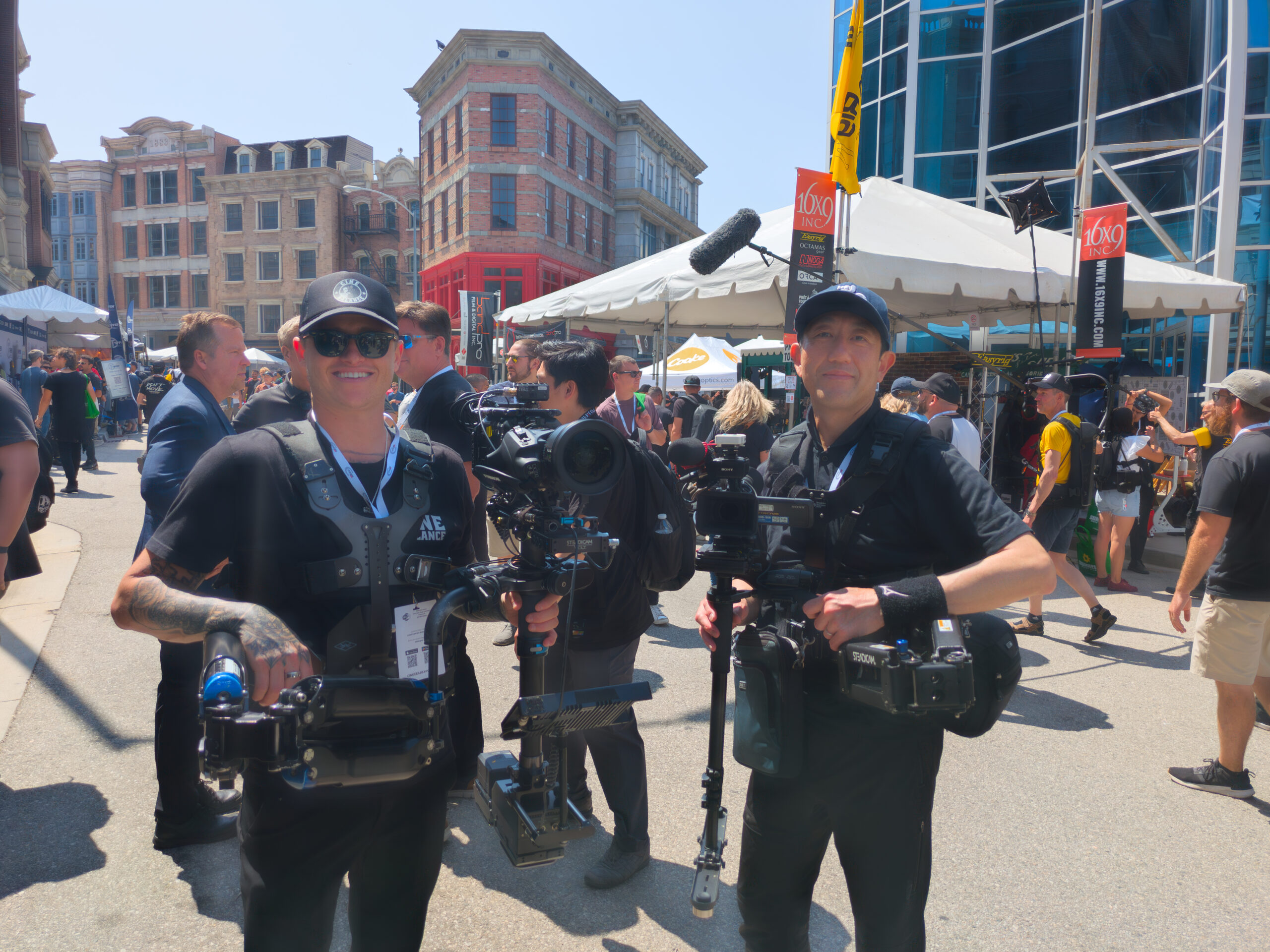
Originally written in Japanese by Tetsuo “TEZ” Suzuki | Profile
Mr. Suzuki is the CEO of Studio Iron Bell, a part-time lecturer in the Department of International Media at Tokyo International University, and a member of the Steadicam Operators Guild (SOG). In 2018, he was trained by Steadicam inventors Garrett Brown and Jerry Holway at the Fall Steadicam Workshop hosted by the Steadicam Operators Association (SOA) in the United States. In 2022, he translated and published the Japanese version of the Steadicam Operators Handbook. As a Steadicam/ENG camera operator, he participated in the Tokyo 2020 Olympic and Paralympic Games, the Beijing 2022 Winter Olympics, and the Paris 2024 Olympics with the OBS Olympic Broadcasting Service.




